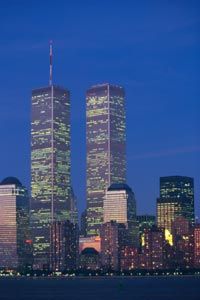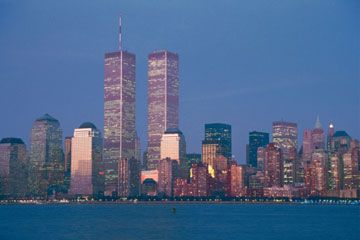Key Takeaways
- The World Trade Center used 12 different grades of steel with yield strengths of up to 100ksi.
- The thickness of the steel in the towers' external walls varied by height, with lower levels using steel up to 4 inches (10 centimeters) thick and higher floors using steel as thin as 0.25 inches (6 millimeters) inches to optimize support against different stresses.
- Despite steel's high melting point, the impact of the planes and subsequent fires weakened the structural components of the World Trade Center, leading to the towers' collapse. The dislodgement of fireproofing materials exposed crucial structural elements to intense heat, ultimately causing a catastrophic failure.
As you might imagine would be the case in a complex as large as the original World Trade Center, multiple different grades of steel were used in construction -- 12, in fact. These grades began at a very common type of steel known as A36, which has a yield strength of 36ksi (or kilopounds per square inch), and got progressively stronger -- all the way up to steels that had yield strengths of 100ksi [source: FEMA].
The yield strength assigned to any grade of steel is the point at which it will bend and not regain its original shape. So A36 steel -- a mix of carbon and iron, like all steels -- can handle 36,000 pounds per square inch (36 kilopounds) of pressure before it begins to deform.
Advertisement
In the external walls of towers one and two of the World Trade Center, the steel also varied by thickness to allow for different pressure loads at different levels. In the lower levels, the thickness was most frequently around 4 inches (10 centimeters), while at higher floors, it could be as thin as 0.25 inch (0.64 centimeter) [source: FEMA].
In the construction of the floors themselves, a mix of A36 and ASTM A 242 steel was used. ASTM A 242 is what is known as a high-strength, low-alloy (HSLA) steel, which means that it was extra-strong, allowing less of it to be used which makes for a lighter building.
Overall, 200,000 tons (181,436 metric tons) of steel were used to build what were, at the time of their construction, the largest buildings on Earth [source: Ross].
Next, find out what happened to all that steel on Sept. 11, 2001.
Advertisement

